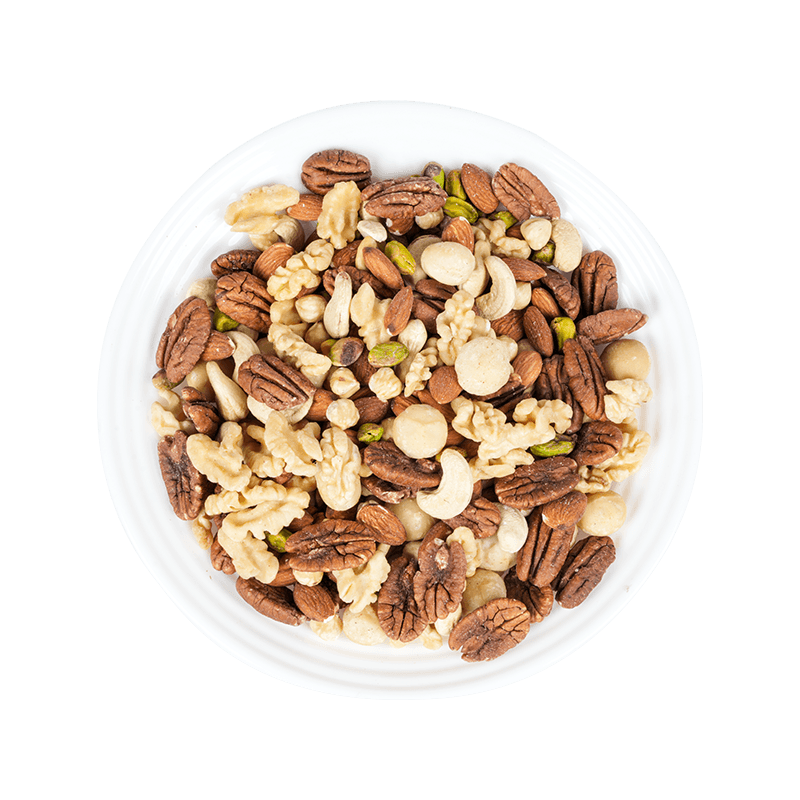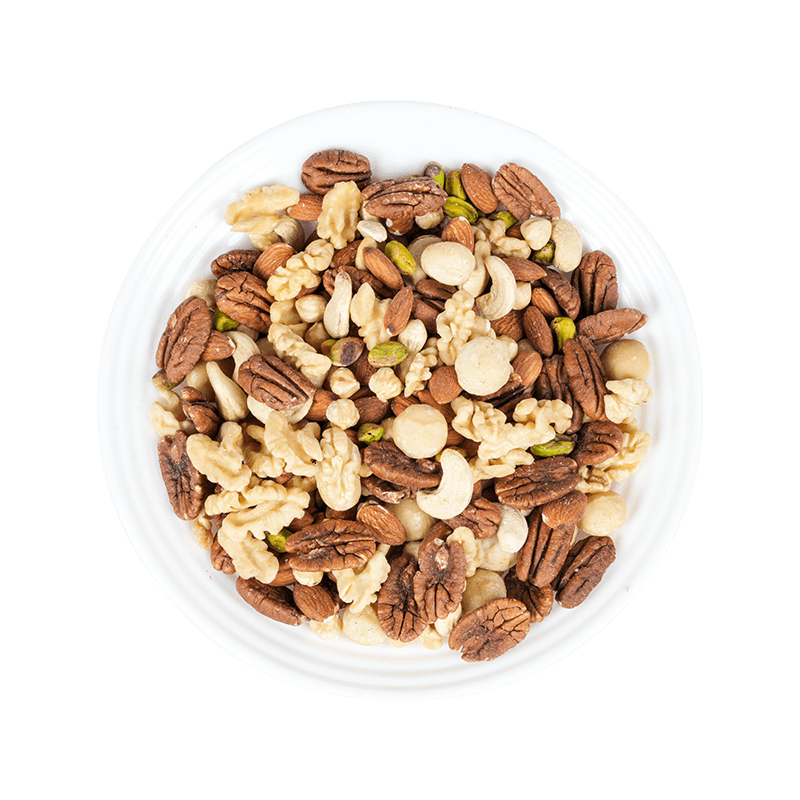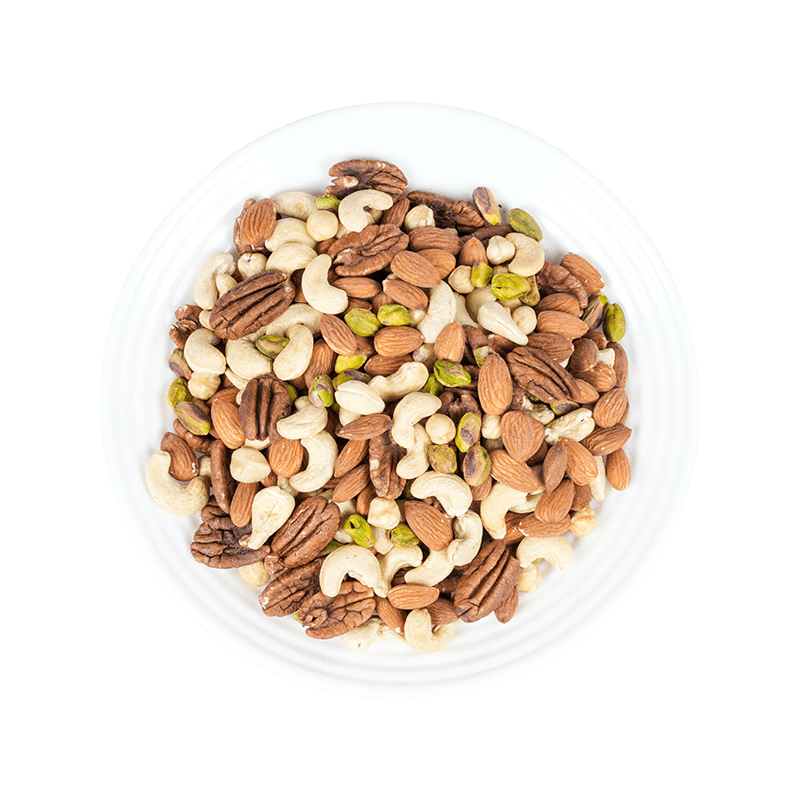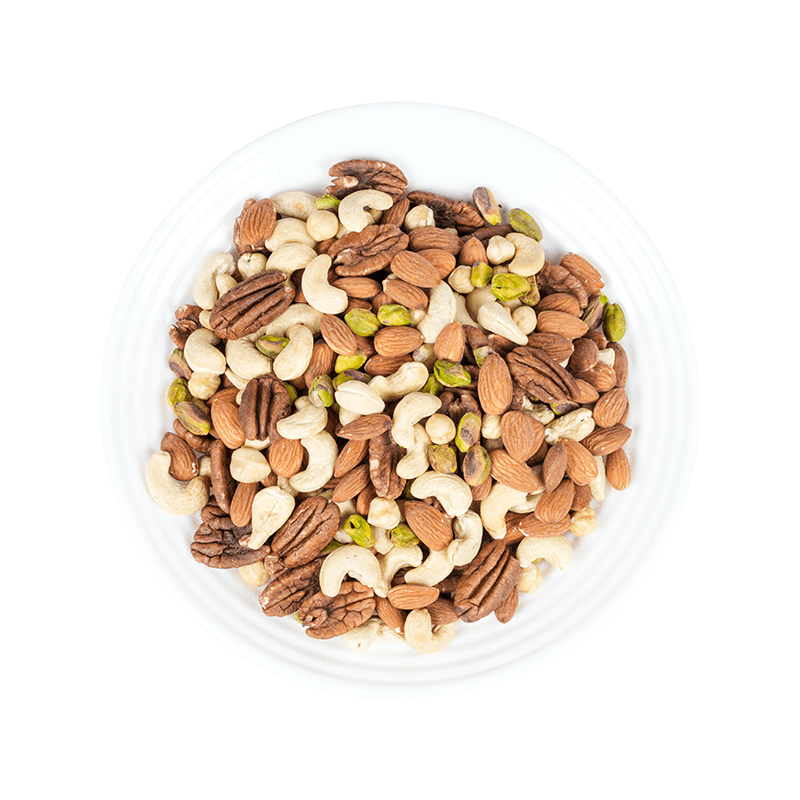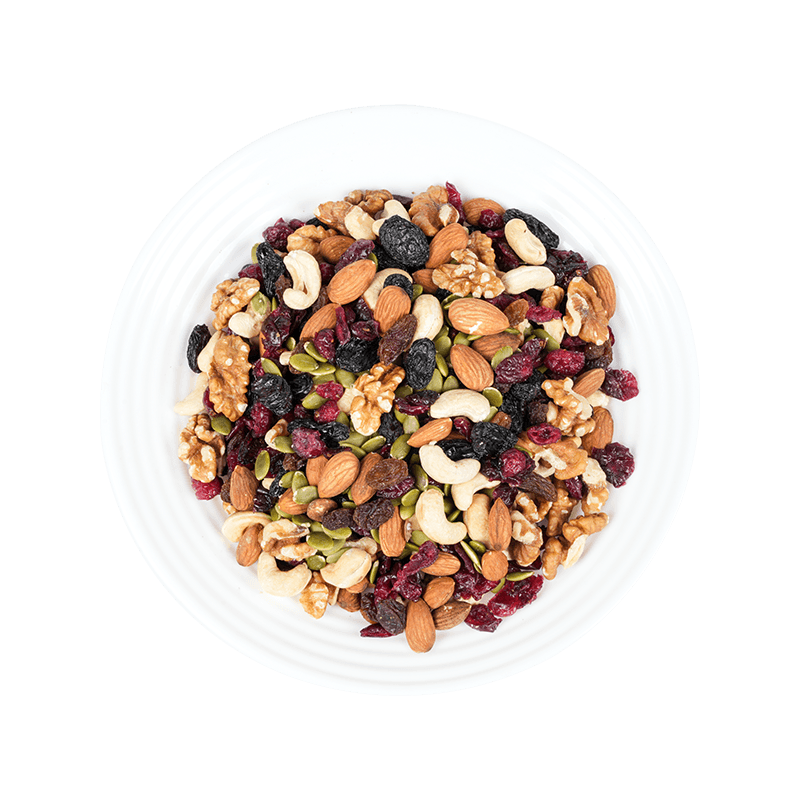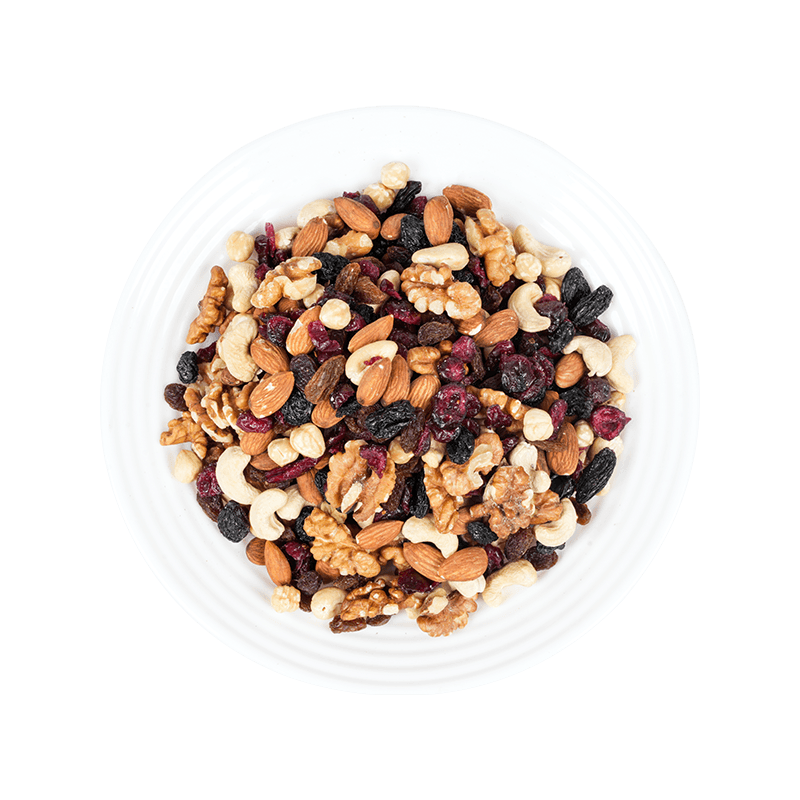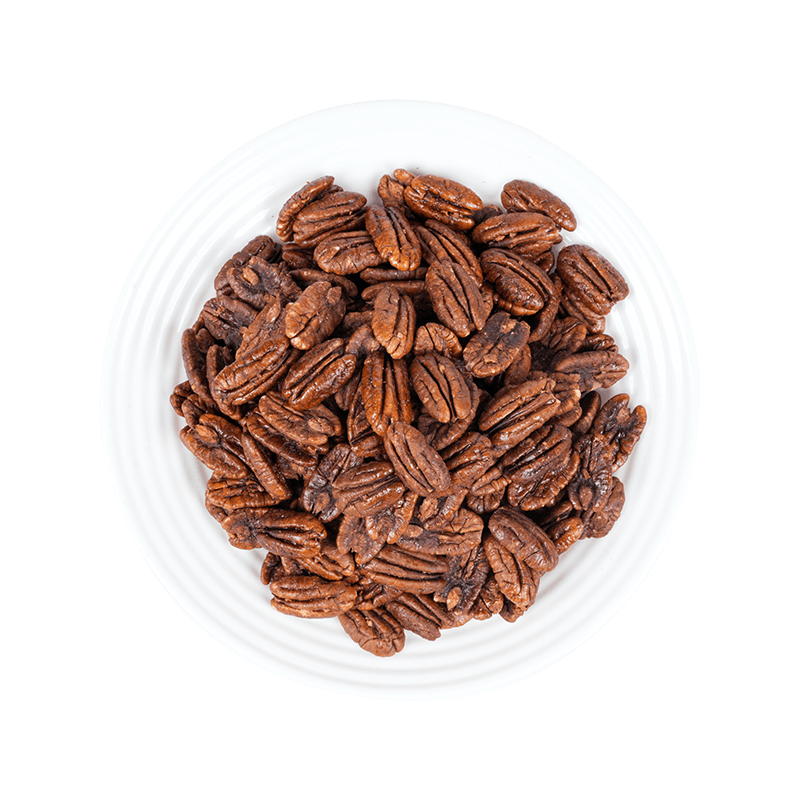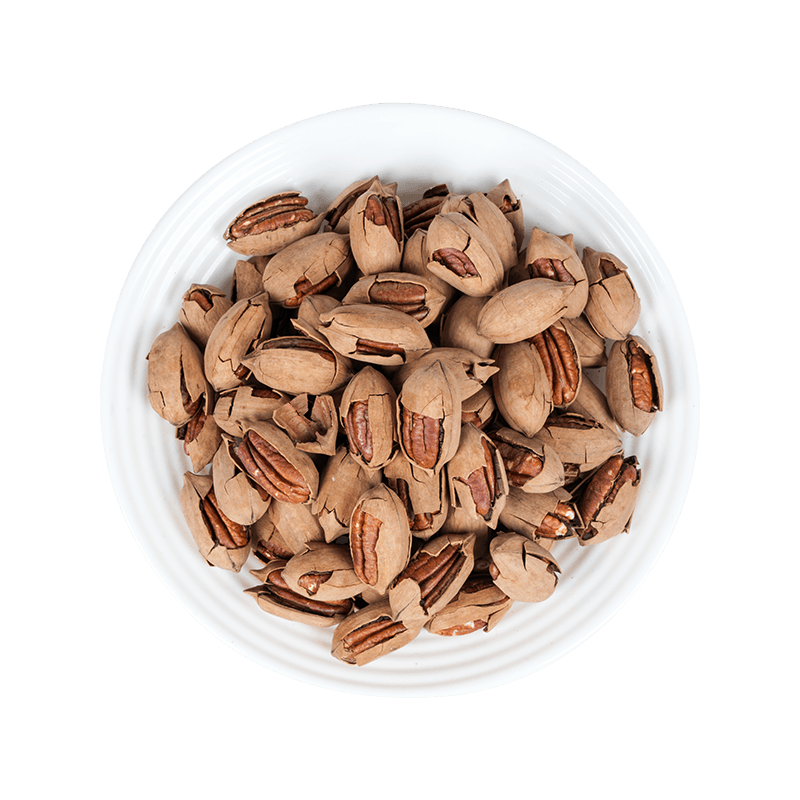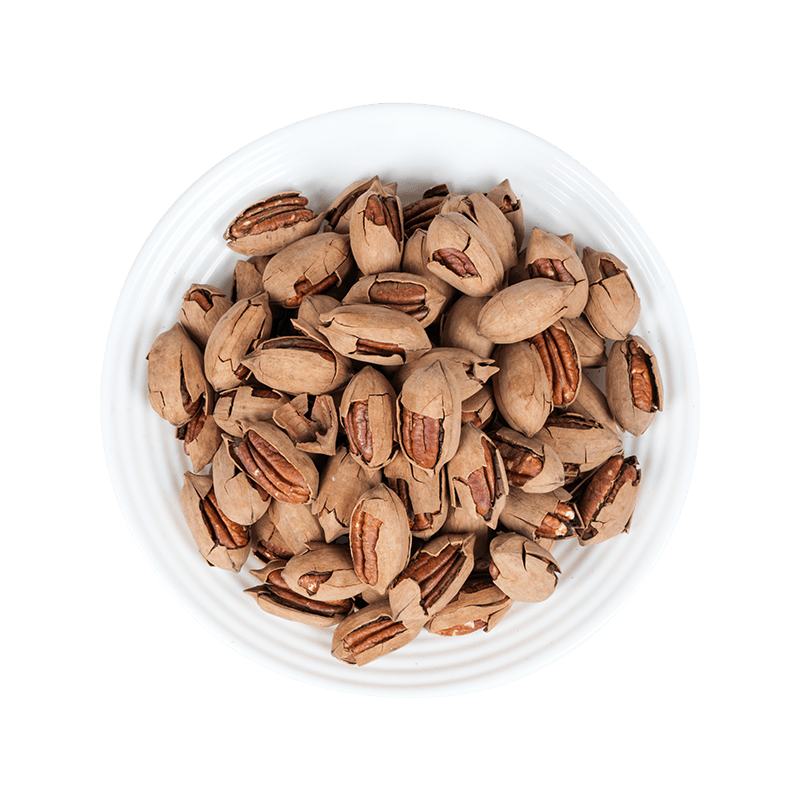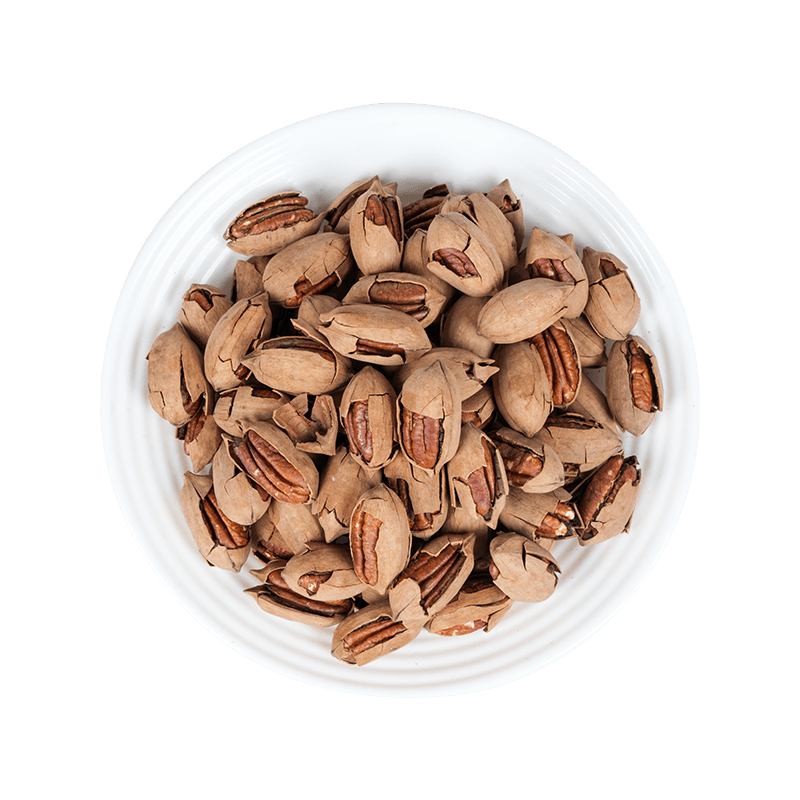Our 7 Kinds of Original Mixed Nuts carefully selects raw materials from high-quality origins around the world to bring you the purest and most delicious nut experience. Each nut has been strictly scre...
See DetailsHickory Kernels: A Nutty Delight
Introduction to Hickory Kernels
Hickory kernels come from the nuts of the hickory tree, which belongs to the walnut family. There are over 16 species of hickory trees, each with its own unique characteristics. These trees are known for their compound leaf structure, straight and narrow trunks, and can reach an average height of about 100 feet (30.48 m). The nuts they produce are relatively large and encased in a woody outer shell or husk.
Appearance and Characteristics of Hickory Nuts
The Outer Husk
When hickory nuts are ripening, their husks are light green. As they mature, the husks turn dark brown and eventually fall from the tree. The texture of the husk can vary - it may be smooth with minimal veining or considerably irregular and furrowed. Once the fruit (nut) inside has fully ripened, the husks split open at the base. However, in some species, the husk may still partially encapsulate the hickory nut even after splitting. The thickness of the husk also varies among species, ranging from 2 mm to 9 mm.
The Nut Shell
After removing the husk, the hickory nut itself comes in different sizes depending on the species. It can measure anywhere between 0.5 inch (13 mm) and 2.56 inches (6.5 cm) long and equally as wide. The shape of the nut can be circular, heart - shaped, or oblong, and it may be either slightly flat or rounded.
Different Species of Hickory Nuts and Their Kernels
Shagbark Hickory Nuts
Shagbark hickory nuts can be found either alone or in pairs. They are typically 1.2 inches (3 cm) to 2 inches (5 cm) long and slightly less wide. The brownish - black husk is of medium thickness and easily splits open to reveal a light brown, heart - shaped, textured, and thin - shelled fruit. The kernel of the shagbark hickory is brown and sweet, making it a favorite among foragers.
Southern Shagbark Hickory Nuts
The husk of a southern shagbark hickory is 0.12 inch (3 mm) to 0.35 inch (9 mm) thick. The egg - shaped shell is smooth, relatively thin, and easy to crack open. The nut meat is light - brown in color and has a sweet taste, offering a delicious snacking option.
Bitternut Hickory Nuts
Bitternut hickory nuts have a shell that may be 0.8 inch (2 cm) to 1.6 inches (4 cm) long. They are rounded and light - brown in color, enclosed in a thin, yellow - scaled husk. As the name suggests, the kernel of the bitternut is bitter and not suitable for eating.
Pignut Hickory Nuts
Pignut hickory nuts generally mature to be about 1 inch (2.5 cm) long and 0.8 inch (2 cm) wide. The husk is thin and dark brown and rarely splits on its own, often requiring manual splitting. The pear - shaped shell is thick, smooth, and grayish brown. The pignut meat is bitter and slightly bland.
Red Hickory Nuts
Red hickory nuts measure approximately 1 inch (2.5 cm) to 1.2 inches (3 cm) long and 0.8 inch (2 cm) wide. The dark husk is about 0.08 inch (2 mm) thick and splits freely on its own to reveal a light brown, rounded, and thin shell. The meat of the red hickory is small but sweet.
King Nut (Shellbark Hickory Nuts)
King nut, or shellbark hickory nuts, are the largest of the hickory nut species. They can grow to be between 1.8 inches (4.5 cm) and 2.6 inches (6.5 cm) long and 1.5 inches (3.8 cm) wide. The oval - shaped shell is very thick, light brown, and slightly furrowed. Due to the thick shell, there is relatively little room for the meat, but the meat that is present is sweet.
Sand Hickory Nuts
Sand hickory nuts are the smallest of the hickory nuts, averaging between 0.5 inch (13 mm) and 1.45 inches (37 mm) long. The husk is light brown and thin and only splits partially to reveal the shell, which is oval, slightly flattened, light in color, smooth, furry, and relatively thin. The kernel of the sand hickory is sweet.
Mockernut Hickory Nuts
Mockernut hickory nuts are one of the larger hickory nut species, growing anywhere between 1.5 inches (3.8 cm) and 2 inches (5 cm) long. They have a thick husk, between 0.12 inch (3 mm) and 0.24 inch (6 mm) thick. The mockernut shell is rectangular in shape, reddish brown, and smooth. The meat is edible and sweet but can be difficult to remove because of the thickness of the shell.
Nutritional Value of Hickory Kernels
Hickory kernels are a good source of nutrition. Fat is the main macronutrient in hickory kernels, with most of the fat content being monounsaturated fat. The primary fatty acid is oleic acid. They also contain moderate amounts of carbohydrate and protein. Additionally, hickory kernels are rich in thiamin, manganese, copper, and magnesium. These nutrients play important roles in various bodily functions, such as energy metabolism (thiamin), antioxidant defense (manganese and copper), and muscle and nerve function (magnesium).
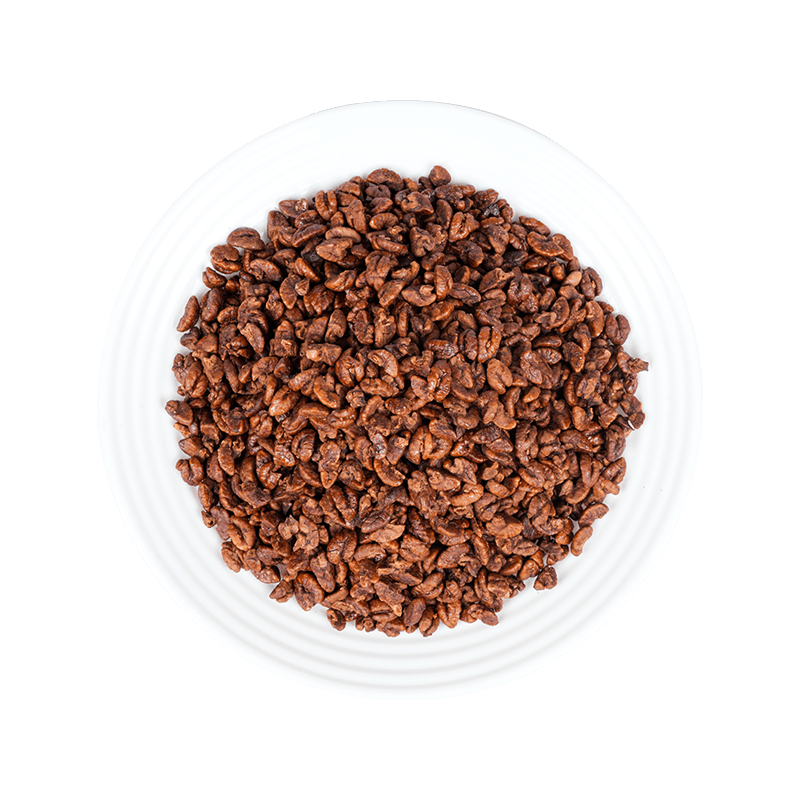
How to Harvest and Prepare Hickory Kernels
Harvesting
The nuts usually start to drop from hickory trees in early autumn, especially when loosened by rain or frost. If you want to forage for hickory nuts, it's best to head to the nearest grove as soon as the nuts begin to fall, as squirrels also love these nuts and can quickly plunder the local crop. When foraging, take a bucket or sack (or wear an apron with big pockets) and use a small stick to search through the leaves under each tree. Most of the nuts you find will still be in their rough, dark hulls, which need to be removed before cracking. Some people stomp on the nuts to remove the hulls, while others carefully pick off the sections of the outer covering one at a time. Don't throw away the hulls, as they can be used as mulch for your garden.
Preparation
Once you've brought your harvest home, sort through the pile and discard any nuts with discolored shells, grub holes, or a dry and wrinkled appearance. Wash the husked nuts thoroughly to remove all mud and debris, and then spread them out in the sun for a few days to dry. Stir the nuts occasionally to ensure they dry out evenly.
To crack open the hickory nuts, you'll need a few tools: a hammer, a nut pick, a brick, and a pan. Place the brick on a hard, level surface (like concrete) and set the pan next to it. Hold a nut between your left thumb and forefinger, with the stem end pointing right. Balance the hickory on top of the brick (narrow edge down) and aim your hammer at a spot about 1/3 of the way down from the stem. Give it a short, sharp blow, and the nut should pop open. Note that it may take some practice to perfect this technique, as the shells don't always split perfectly. As you open each nut, drop the sections containing the meat into the collection pan. Then, use a nut pick to remove the delicious kernels. You can also use the shell fragments in a bird feeder, as birds may peck at any small morsels you missed.
Culinary Uses of Hickory Kernels
Hickory kernels can be used in a variety of culinary applications. You can enjoy them raw, savoring their natural, slightly sweet and nutty flavor. They can also be toasted for a more intense taste. To toast them on the stovetop, use a dry, un - oiled pan or cookie sheet set over medium heat. Spread the nutmeats evenly across the pan and stir often until they turn light brown. Then, quickly move them to a cool surface to prevent over - toasting.
In baking, hickory kernels can be added to cake and cookie recipes. They add a wonderful crunch and unique flavor. You can also use them in savory dishes, such as adding them to salads for an extra bit of texture and nuttiness.
Storage of Hickory Kernels
Proper storage is important to keep hickory kernels fresh. Store them in an airtight container in a cool, dry place. If stored at room temperature, they will stay fresh for a few weeks. For longer - term storage, you can keep them in the refrigerator, where they can last for several months, or in the freezer, where they can remain fresh for up to a year.
Allergies and Considerations
The Food and Drug Administration (FDA) considers hickory nuts to be a “major allergen” along with other tree nuts. People with tree nut allergies should avoid hickory kernels, as they can cause severe allergic reactions, including symptoms such as itching, swelling, difficulty breathing, and in severe cases, anaphylaxis.
We provide quality products and services to customers from all over the world
 CONTACT US
CONTACT US


 English
English عربى
عربى
